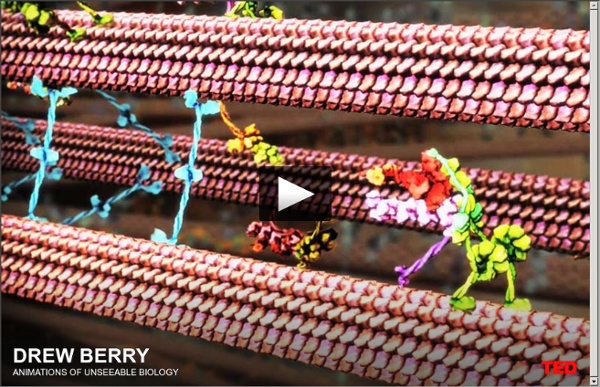



Anatomy | Anatomy Atlas | Human Anatomy | Cross Sectional Anatomy | Anatomy Education | Anatomy Library - Anatomy Atlases Eye Cells Made with Ink-Jet Printer Ink-jet printing technology could be a way to build new tissue meant to restore vision to people suffering from common forms of blindness due to retinal degeneration. Researchers at the University of Cambridge used a standard ink-jet printer to form layers of two types of cells taken from the retinas of rats, and showed that the process did not compromise the cells’ health or ability to survive and grow in culture. Ink-jet printing has been used to deposit cells before, but this is the first time cells from an adult animal’s central nervous system have been printed. The group hopes to develop the technology into a tool for generating new tissues that can be grown outside the eye and implanted in patients with retinal damage. Scientists can grow single layers of cells in cultures, but printing may be a more effective way to engineer new tissues and organs, which are made of multiple different cell types positioned in intricate three-dimensional orientations.
Khan Academy Indian scientists fight cancer with plant molecules What do tea, turmeric and broccoli have in common? A lot, when it comes to an arsenal of certain chemicals found in them, called phytochemicals, that can be harnessed to combat cancer therapy side-effects in synergy with conventional anti-cancer drugs. Chemotherapy is fraught with side-effects. Now Indian scientists have shown how certain naturally-occurring plant chemicals when used in combination with routine cancer drugs can actually lower the dosage of the medication, thereby minimising the after-effects. Moreover, phytochemicals (plant chemicals) may increase the efficiency of the drugs, said Madhumita Roy, head of the Environmental Carcinogenesis and Toxicology Department at Chittaranjan National Cancer Institute (CNCI) here, who led the study. "Our data suggest that treatment of cells with these phytochemicals in conjunction with chemotherapeutic drugs resulted in the same extent of cell killing at a much lower concentration of the drug," Roy told IANS.
Wikiversity Elucidating biological cells' transport mechanisms A new study focuses on the motion of motor proteins in living cells, applying a physicist's tool called non-equilibrium statistical mechanics Motion fascinates physicists. It becomes even more intriguing when observed in vivo in biological cells. Using an ingenious setup, Japanese scientists have now calculated the force of molecular motors acting on inner components of biological cells, known as organelles. In a new study, published in EPJ E, the focus is on mitochondria - akin to micrometric range cellular power plants - travelling along microtubules in a cell. Hayashi and colleagues have investigated, for the first time, the so-called Einstein relation for the motion of mitochondria transported by motor proteins - called kinesin and dynein - in living cells. The researchers observed the motion of a mitochondrion transported by motor proteins using fluorescence microscopy. Explore further: Mitochondria separate their waste More information: K.
The Art of Insight and Action Video: About this course Introduction to the MOOC: Water Treatment About this course | About this course | CTB3365x Courseware Skip to this view's content Please enter your e-mail address below, and we will e-mail instructions for setting a new password. Help Have general questions about edX? Have a question about something specific? Report a problem Make a suggestion Ask a question Please note: The edX support team is English speaking. Thank you for your inquiry or feedback. We're Sorry, edX accounts are unavailable currently The following errors occurred while logging you in: Your email or password is incorrect Please provide the following information to log into your edX account. Required Information Account Preferences Courses: nanoHUB-U: Bioelectricity The text for this course is “Neuroscience” by Purves, et al. The text is available through the following link: This five-week short course aims to introduce students to bioelectricity using a unique, “bottom up” approach. (non-YouTube version) Fundamentals of bioelectricity of the mammalian nervous system. Preview the lectures below, or join the course by clicking the yellow button on the right and entering your nanoHUB login information! Week 1: Introduction to the Nervous System by Pedro Irazoqui Week 2: Chemical Basis of Electrical Signals by Pedro Irazoqui Week 3: Models of Biological Conductors by Pedro Irazoqui Week 4: The Hodgkin-Huxley Model by Pedro Irazoqui Week 5: Applications of Bioelectricity by Pedro Irazoqui The objective of this course is to establish a background and to dig deeper into some of the applications of bioelectricity to medicine.
WEATHER in a TANK: Experiments & Observations Read about the project in the following articles: "WEATHER IN A TANK”—Exploiting Laboratory Experiments in the Teaching of Meteorology, Oceanography, and Climate - BAMS (Nov 2009) The Effectiveness of Rotating Tank Experiments in Teaching Undergraduate Courses in Atmospheres, Oceans, and Climate Sciences - Journal of Geoscience Education (Feb, 2012) This is an NSF-funded project in which curricula materials that combine atmospheric data and laboratory fluid experiments are being developed in the teaching of meteorology, oceanography and climate at undergraduate level. In phase I of the project, methodologies were explored in support of laboratory-based teaching of rotating fluid dynamics to sophomores, juniors and seniors at the Massachusetts Institute of Technology. In Phase 2 we are: Lodovica Illari John Marshall